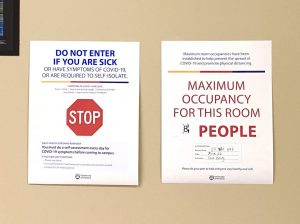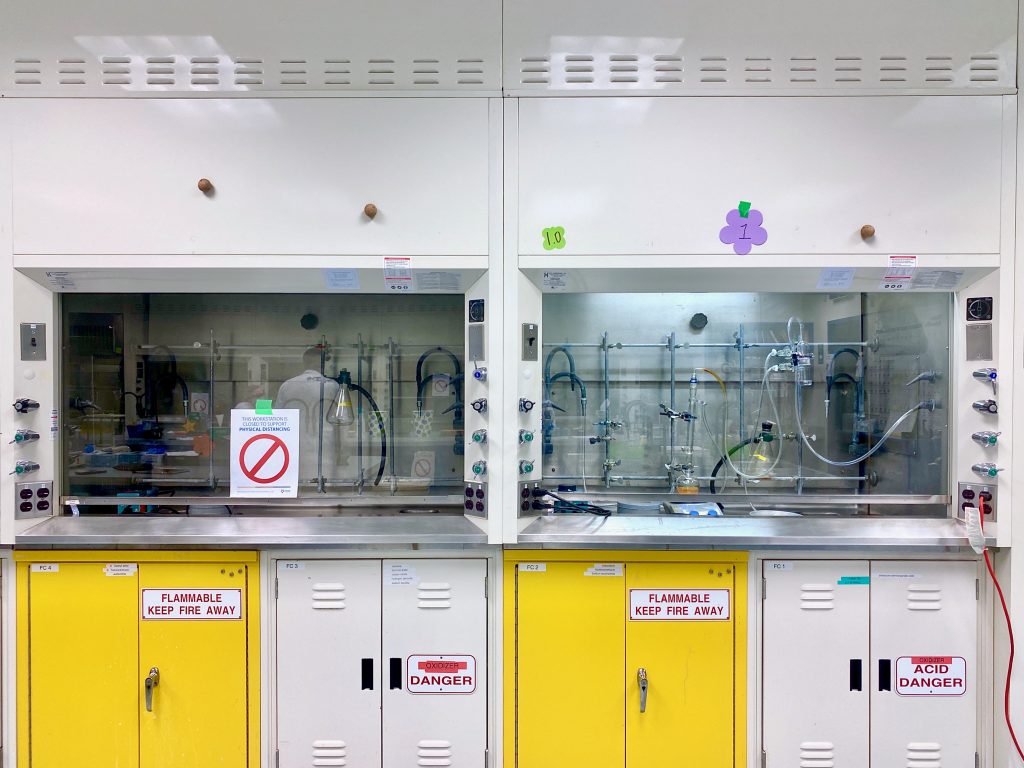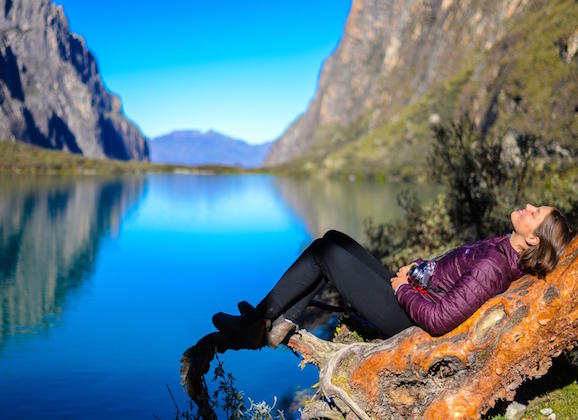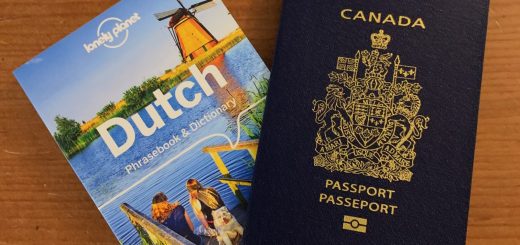Face-to-Face Classes: How Do They Work?
This past fall semester, I had the privilege of being back on campus for Chem 260, a face-to-face laboratory course. Yes, there were a lot of protocols; no, they weren’t terribly complicated.
Each week, my section had six students and one TA. To put this into perspective, the same section last year would’ve had twenty students. While this smaller class size was a bit awkward at first, it was always easy to ask questions and get help during experiments and tutorials from our TAs.
The most important thing about a face-to-face class during a pandemic are protocols. A week before we started face-to-face labs, we received an email with a Safe Work Plan (SWP) and health-related protocols for the lab spaces.

The maximum occupancy of each room was also listed on the each the door of each classroom being used during the semester.
The SWP outlined things like maximum occupancy of each room, physical distancing measures, PPE (personal protective equipment), how often the surfaces/equipment would be disinfected, etc.
It was a detailed plan that basically answered any question that a student would need to ask about being in the lab.
It also outlined which measures they would use to implement to promote physical distancing. For example, there was a lot of directional flow signage on the floor to show whether walkways were for one-way or two-way traffic (similar to a road).
The health-related protocols were simple. To sum it up, they said that students should:
- Complete a self-assessment before going to campus.
- Wear a face mask, which in September was recommended in buildings but required in the teaching labs. (Face masks were supplemented with face shields when close contact could not be avoided.)
- Apply hand sanitizer upon entering buildings.
- Physically distance and leave 2m between themselves and others.
- Disinfect their workspace afterwards with isopropanol.
Simple, right? Only in theory.
Since a lot of things (chemicals, equipment, etc.) in the lab are shared, physically distancing from others while working on experiments isn’t always easy.
To be honest, physical distancing is a lot of awkward waiting and empty space, but I mean, it’s better than the alternative.
We were also discouraged from bringing materials between the lab and home. Lab reports were turned in on Brightspace, and lab manuals were supplied for use in class (and they were available online for at home use).
Oh, and in-class worksheets? These were disinfected in the oven, which someone learned the hard way after using heat-sensitive ink from a FriXion pen to write.
During our first lab, we received a bag with masks (and a small note with instructions on how to adjust and take care of the masks). (A small shout out to our Senior Lab Instructor who made us these masks AND helped us out a lot in the lab.)
Each bag had one mask with a science-y pattern and one other mask with a general pattern. The week of Halloween we also received Halloween themed masks.
Overall, there are a lot of safety protocols for those who are on campus but these ultimately kept students and instructors safe and gave us the opportunity to continue learning in the lab.
While I understand that these protocols and plans are different in each faculty and department, I hope this gave you a glimpse into the reality of face-to-face classes or maybe even persuaded you to sign up for that face-to-face class you’ve been debating to take.






